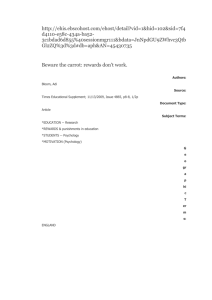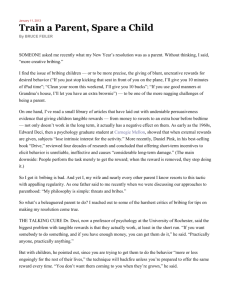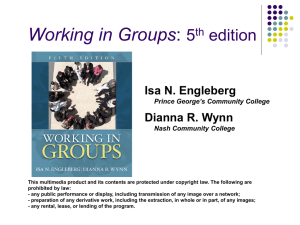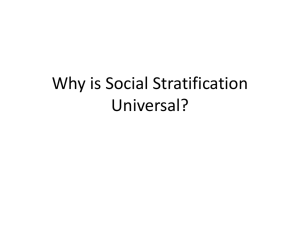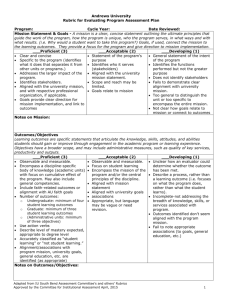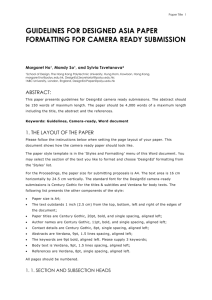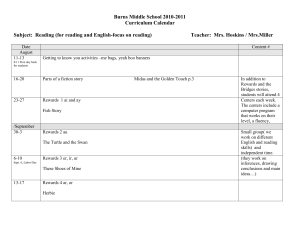Community Engagement - University of Louisville
advertisement
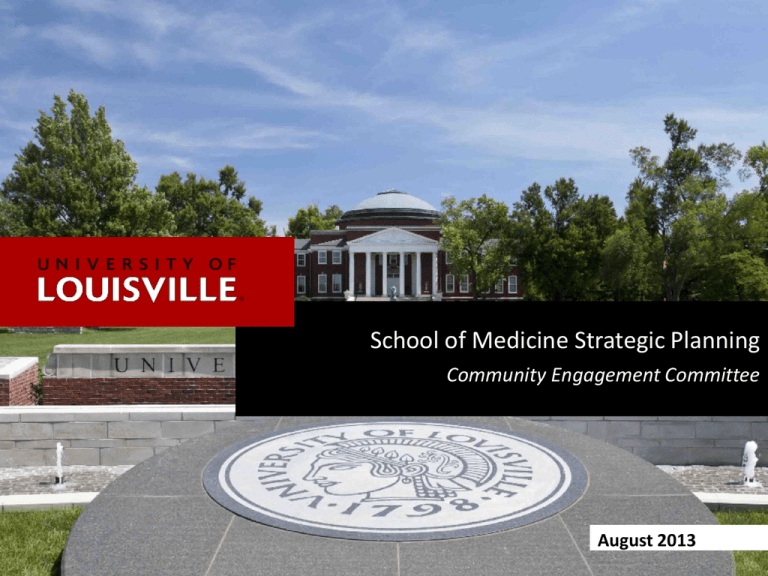
School of Medicine Strategic Planning Community Engagement Committee August 2013 The Community Engagement Committee • Sharmila Makhija - Chair • Gary Mans • Dan Cogan • Terri Mason • Kelli Bullard Dunn • Kerri Remmel • Irv Joshua • Michael Rowland • Faye Jones • Ted Smith • Erica Labar • Allan Tasman • Steve Wheeler School of Medicine Four Inter-related and Integrated Planning Initiatives The Community Engagement Team was assembled as one of four strategic planning teams charged with developing a path forward for the School of Medicine to define and advance its role in the community Educational Enterprise Committee A plan for enhancing the quality and breadth of the medical education and student success Research Enterprise Committee A plan for growing and strengthening our research portfolio Clinical Enterprise Committee A plan for improving the quality and strength of our clinical practice Community Engagement Committee A plan for enhancing our impact and role in the community Planning Process that is Inclusive, Collaborative, Transparent Seek input and participation from all critical stakeholder`s including faculty, staff, ULP, University Hospital, and Kentucky One The Committee followed the general approach used by each of the four strategic planning teams and completed Phases 1 & 2 Where are we today? • Assessment of existing community practices • Evaluation of strengths, weaknesses, opportunities, and threats Where do we want to be? • The design of plans to improve the quality of community practices, programs and efforts How will we get there? • Detailed plans for implementing initiatives designed to improve educational, clinical, research and community programs , practices and services Where are we today? • Creating a common definition of Community Engagement to guide the effort To guide its effort, the Committee created the following definition of "Community Engagement" Community Engagement is a form of scholarship that embraces teaching, research, and service for the mutual benefit of external audiences and the University. Examples could include community-based research, service-learning, educational enrichment programs for the public, youth services, public health outreach, health education, etc. • “Community Engagement” differs from “Community Service” — Community Service is often associated with volunteerism and generally refers to service that a person performs for the benefit of his or her local community. — Community Engagement is a form of scholarship for the mutual benefit of the institution and the community • The Committee recognized that “Community” reaches beyond just the local or regional geography and includes issues of national and global importance Where are we today? In assessing and evaluating the current community engagement effort within the School of Medicine, the committee made the following six leading conclusions 1. Medical School faculty, students and staff are engaged in meaningful scholarly, research, and service projects and initiatives across our major communities (Metro Louisville, Kentuckiana, and the Commonwealth of Kentucky) • There is a lot of good work occurring and people are engaged 2. While good and meaningful community engagement is occurring, the School’s efforts are largely disjointed and uncoordinated • The School is not leveraging activities, partners or efforts in ways that could produce greater results 3. The focus of the School’s Community engagement effort is largely led by individual faculty, staff or students • Individuals seek opportunities and develop opportunities aligned to their interests and competencies Where are we today? In assessing and evaluating the current community engagement effort within the School of Medicine, the committee made the following six leading conclusions 4. The School’s Community engagement effort lacks strategic focus and direction • The School lacks a clear vision for its role in the community and any meaningful strategies aligned to such a vision • As a result the School lacks clearly defined objectives, measures, metrics or targets for guiding its Community engagement effort 5. The School is not getting appropriate recognition from the Community for its efforts • Many efforts are unknown and not widely communicated or shared with others in the School or outside the University 6. There are limited incentives and rewards for faculty and staff to be involved in community engagement efforts • Promotion and tenure guidelines do not adequately recognize engagement • There are ineffective financial or other rewards to stimulate greater participation in community engagement Where do we want to be? In response to the six key findings and conclusions, the Committee developed the following strategies for moving the effort forward 1. Expand the School’s mission to include “Community Engagement” as a fourth pillar of the School’s goals • Create a vision for Community Engagement • Develop a detailed strategy for achieving the vision • Create specific goals, objectives, targets and measures of success for the School, departments, faculty and staff • Ensure that the Community Engagement Plan in aligned, integrated and supportive of the overall strategic aims of the School of Medicine and with the broader aims of the University and the other Health Sciences Schools Where do we want to be? In response to the six key findings and conclusions, the Committee developed the following strategies for moving the effort forward 2. Create an Office of Community Engagement • Facilitate the development and execution of a Community Engagement Plan that includes, but is not limited to, achieving the following objectives: — — — — — — • • • Advance scholarly and research based engagement Broaden community partnerships Adequately market and promote the effort Create meaningful rewards and recognition for faculty and staff Ensure that the overall effort is organized and coordinated Develop effective and efficient ways to collect information about current and future initiatives and projects Allocate sufficient resources to facilitate success Ensure that the office is aligned to the objectives of all units within the School of Medicine and with the broader goals of the University Ensure Office of Community Engagement is aligned with the mission of the Office of Diversity and Inclusion Where do we want to be? In response to the six key findings and conclusions, the Committee developed the following strategies for moving the effort forward 3. Develop appropriate and effective incentives, rewards and recognition for faculty, staff and students including promotion and tenure policies and practices • Align to current campus initiatives aimed at evolving the role of “Engagement” and evolving rewards and recognition policies • Further investigate internal and external best practices (for example Kent School of Social Work and Michigan State University among others) 4. Further assess and understand the needs of the Community and align those needs to the School’s strengths, competencies and strategic objectives • Regularly meet with community leaders • Understand leading medical trends and statistics in the communities of interest Where do we want to be? In response to the six key findings and conclusions, the Committee developed the following strategies for moving the effort forward 5. Create a comprehensive marketing and communications plan • Ensure that appropriate resources are committed to fully communicate, market, promote and share the results of the School’s role and work in the community


